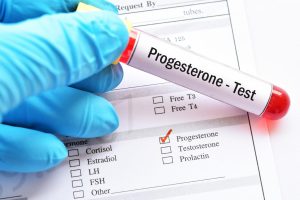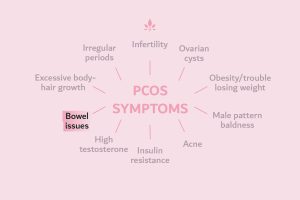الأسباب التي قد تجعلكِ تُصابين بمُتلازمة المبيض المُتعدد الكيسات حتّى في حال عدم وجود كيسات على المبيض

Polycystic Ovary Syndrome (PCOS) is not a particularly well named condition. According to the most widely accepted clinical guidelines, polycystic ovaries are not required for a diagnosis and many women with PCOS will have normal ovarian morphology. Furthermore, it is quite possible to have ovarian cysts, but not PCOS.
The Rotterdam consensus in 2003 (sponsored in part by the European Society for Human Reproduction and Embryology and the American Society for Reproductive Medicine) stated that to reach a diagnosis of PCOS a female must present with two out of the following three symptoms:
- Hyperandrogenism
- Anovulation
- Polycystic ovaries
Polycystic ovaries are defined as having more than 12 follicular cysts and an ovarian volume of 10ml or greater. Transvaginal ultrasound scans are useful for determining this, but should never be used in isolation for PCOS diagnosis as at least one of the other two symptoms listed above are required for an accurate diagnosis.
In fact, an alternative name for PCOS is hyperandrogenic anovulation, which, whilst less easy to articulate, is certainly a more accurate definition. Literally meaning an excess of male hormones and lack of ovulation, this much more closely describes the most common phenotypes of the condition.
Polycystic ovaries do remain a clinically recognised symptom of PCOS and it is estimated that 75% of women with PCOS will have abnormal ovarian morphology. However, up to a quarter of all women of reproductive age will have some degree of ovarian abnormality, suggesting that the false positive rate is high. Innocuous follicular cysts are common, particularly in young women. They form when a follicle containing an egg does not open to release the egg, and they are termed partially mature. In the absence of other PCOS symptoms, they are usually benign in nature and nothing to worry about.
To learn more about PCOS click here. However, try get yourself a PCOS test and PCOS pack.
Nabta is reshaping women’s healthcare. We support women with their personal health journeys, from everyday wellbeing to the uniquely female experiences of fertility, pregnancy, and menopause.
Get in touch if you have any questions about this article or any aspect of women’s health. We’re here for you.
Sources:
- Azziz, R, et al. “Positions Statement: Criteria for Defining Polycystic Ovary Syndrome as a Predominantly Hyperandrogenic Syndrome: an Androgen Excess Society Guideline.” The Journal of Clinical Endocrinology and Metabolism, vol. 91, no. 11, Nov. 2006, pp. 4237–4245., doi:10.1210/jc.2006-0178.
- Balen, A H, et al. “Ultrasound Assessment of the Polycystic Ovary: International Consensus Definitions.” Human Reproduction Update, vol. 9, no. 6, 2003, pp. 505–514.
- El Hayak, S, et al. “Poly Cystic Ovarian Syndrome: An Updated Overview.” Frontiers in Physiology, vol. 7, 5 Apr. 2016, p. 124., doi:10.3389/fphys.2016.00124.
- Gourgari, E, et al. “Bilateral Adrenal Hyperplasia as a Possible Mechanism for Hyperandrogenism in Women With Polycystic Ovary Syndrome.” The Journal of Clinical Endocrinology and Metabolism, vol. 101, no. 9, Sept. 2016, pp. 3353–3360., doi:10.1210/jc.2015-4019.
- “How Do Health Care Providers Diagnose PCOS?” National Institute of Health, www.nichd.nih.gov/health/topics/pcos/conditioninfo/diagnose. Last Reviewed Date 31/1/2017.
- Rotterdam ESHRE/ASRM-Sponsored PCOS Consensus Workshop Group. “Revised 2003 Consensus on Diagnostic Criteria and Long-Term Health Risks Related to Polycystic Ovary Syndrome.” Fertility and Sterility, vol. 81, no. 1, Jan. 2004, pp. 19–25.










